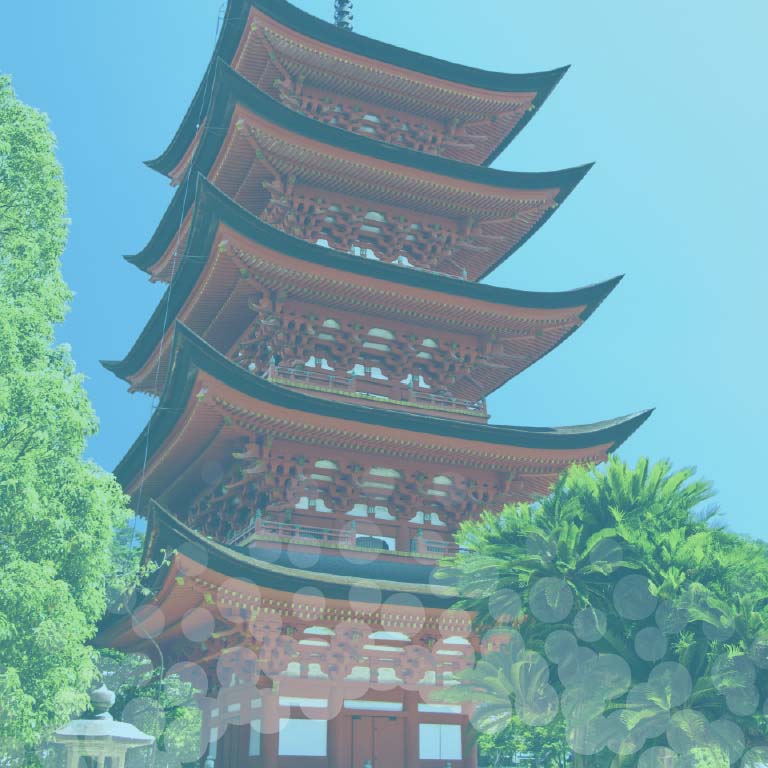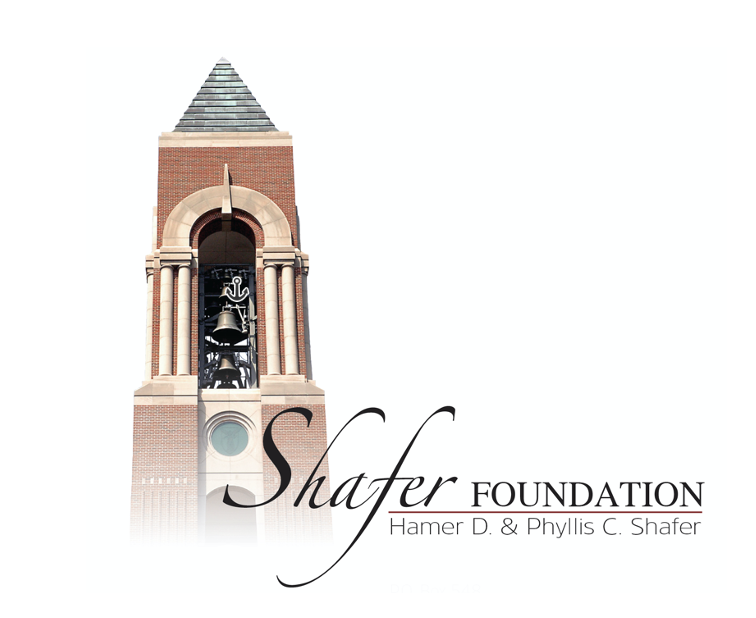
East meets West as Orchestra Indiana performs Nikolai Rimsky-Korsakov’s large-scale Scheherazade, which is based on the collection of middle-eastern folk tales One Thousand and One Nights. The program will also feature Tan Dun’s score from Crouching Tiger, Hidden Dragon, performed by special guest cellist Andre Gaskins, as well as Charles Tomlinson Griffes’s tone poem The Pleasure Dome of Kubla Khan, inspired by the unfinished poem by English romantic poet Samuel Taylor Coleridge.
The concert will be performed on Friday, February 24 at 7:30 pm at the Honeywell Center in Wabash, and again on Saturday, February 25 at 7:30 pm at Emens Auditorium in Muncie.
Would you like more background about the music you'll hear on this concert? Join us before the performance in Muncie for a pre-concert talk! Education Coordinator Dr. James Thompson will provide an insightful and informative introduction to the pieces on the program.
MUNCIE:
6:45 pm in the Hospitality Suite on the 2nd Floor of Emens Auditorium.



East Meets West
Matthew Kraemer, conductor
Andre Gaskins, cello
The Pleasure Dome of Kubla Khan, Op. 8 — Charles Tomlinson Griffes
Crouching Tiger Concerto — Tan Dun
I. Crouching Tiger, Hidden Dragon
II. Through the Bamboo Forest
III. Silk Road: Encounters
IV. Eternal Vow
V. To the South
VI. Farewell
Andre Gaskins, cello
Intermission
Scheherazade, Op. 35 — Nikolai Rimsky-Korsakov
I. The Sea and Sinbad's Ship
II. The Legend of the Kalendar Prince
III. The Young Prince and the Young Princess
IV. Festival at Baghdad
Charles Tomlinson Griffes - The Pleasure Dome of Kubla Khan
*Excerpted from program notes written by Lindsay Hansen, https://scholarworks.csun.edu/bitstream/handle/10211.2/2150/HansenLindsay201206.pdf?sequence=1
American composer Charles Griffes wrote a wide variety of pieces during his short life, exhibiting interest in German Romanticisim, French Impressionism, and so-called “orientalism” from China and Japan. A talented painter and sketch artist, Griffes applied his sense of color to his musical works. He was often compared to Debussy and Saint-Saens, although Griffes’ style was not imitative but highly original.
Originally conceived as a work for piano in 1912, The Pleasure Dome of Kubla-Khan is perhaps Griffes’ most famous orchestral work. In the program notes for the Boston Symphony Orchestra’s performance, Griffes wrote that he had “taken as a basis for my work those lines of [Samuel] Coleridge’s poem describing the ‘stately pleasure-dome,’ the ‘sunny pleasure-dome with caves of ice,’ the ‘miracle of rare device.’ Therefore I call the work The Pleasure Dome of Kubla-Khan rather than Kubla Khan.” Coleridge had written the short poem in 1816, which was hailed for its exotic imagery.
Pleasure Dome is a single-movement piece that calls for a “grand orchestra” of flutes, oboes, English horn, clarinets in A, bass clarinet in Bb, bassoons, horns, trumpets, trombones, tuba, timpani, bass drum, cymbals, tambourine, gong, pianoforte, celesta, harps, violins, violas, cellos, and double basses. Griffes noted on the first page of the score that the “piano part is not to be played as a solo, but to be blended in with the other instruments.” He gave the piano an almost percussive role after having created the piece as a piano solo. A challenging piece to analyze or perform, Pleasure Dome features frequent tempo, key, and dynamic changes, combined with tonalities invented by Griffes and intermittent whole tone and pentatonic scales.
Tan Dun - Crouching Tiger Concerto
*Excerpted from program note written by Peggy Monastra, https://www.wisemusicclassical.com/work/33553/Crouching-Tiger-Concerto--Tan-Dun/
Tan Dun's and Ang Lee's individual bodies of work have focused on the meeting of the cultures of East and West, and the fascinating hybrid that results — something no longer wholly Eastern or Western. Tan Dun's four Orchestral Theater works explored the ways in which a classical Western orchestra can generate music that is neither classical nor Western. He has likewise sought to re-imagine and re-invigorate the Western concert experience through the integration of traditions from Chinese opera, Asian theater, ancient ritual and the addition of film and live video. Ang Lee's earlier films Pushing Hands, The Wedding Banquet and Eat Drink Man Woman have likewise explored the mingling of East and West in human-interest dramas about Asian families living under the influences of contemporary Western culture. Like Tan Dun's Orchestral Theater series, these films focus on that which is born of the cross-fertilization of cultures, traditions and generations. In developing the musical scores to accompany his films, Lee has sought out innovative composers who are adept at creating a contemporary sound in the blending of these two musical traditions. It thus seems a natural progression that Tan Dun's and Ang Lee's work should come together not only in the format of music accompanying images but also as a work in which images accompany music.
The Crouching Tiger Concerto, for cello and chamber orchestra, is a concert work based on Tan's Oscar-winning score for Lee's Oscar-winning film, Crouching Tiger, Hidden Dragon — a film which joins the quintessential Asian genre of martial arts cinema with the drama of a western romance with a deep metaphorical message.
The concerto is in six movements with cello cadenzas connecting the orchestral movements. Each of the orchestral movements are accompanied by video footage created by Ang Lee and James Schamus. Although numerous concert works have been developed from film scores, this concerto is unique in that it brings the collaborative/creative process full circle. Tan's film score, written to strengthen and complement the viewing and dramatic experience of the film, was profoundly influenced by the film's poetic imagery, complex emotions, and exotic landscapes. In the creation of this concerto, the filmmakers were put into the composer's chair where Tan's evocative music inspired the reshaping of their images to accompany and enhance the concert listening experience. Lee and Schamus consider these video images as secondary to the music and they are not meant to impart any narrative to the concerto.
The Crouching Tiger Concerto is highly reflective of Tan Dun's current interest in the historical cultures of the Silk Road. Woven into the film score and concerto are instruments, their performing techniques and articulations, and melodies native to the cultures which intermingled along the Silk Road in China's Xinjiang province. Of particular interest is the cello melody in the third cadenza which is a folk song from this region. Instruments heard in the concerto which are indigenous to these Silk Road cultures are the tar (a North African frame drum) and the bawu (a bamboo, copper-reed flute which came into China from Southeast Asia). The rawap (a high-pitched, plucked string instrument native to the Uygar culture of the Taklimakan area) is prominent in the film score and represented in the concerto in melodies and articulations transcribed to the cello and the orchestra. The erhu (a Chinese bowed string instrument which has its roots in India) is evoked throughout the concerto in the melodic contours and sonorities called for in the cello's melodies and cadenzas. Additional instruments from Silk Road cultures can be heard throughout in the gestures and timbres that Tan crafted into the scoring of this Western orchestra.
The Crouching Tiger Concerto was written for and inspired by Yo-Yo Ma. The work received its world premiere in September 30, 2000, at London's Barbican Centre Festival: Fire Cross Water, of which Tan Dun was artistic director.
Nikolai Rimsky-Korsakov - Scheherazade
*Excerpted from program notes written by Michael Steinberg, https://www.sfsymphony.org/Data/Event-Data/Program-Notes/R/Rimsky-Korsakov-Scheherazade,-Symphonic-Suite,-Opu
As a boy and young man, Rimsky-Korsakov, many of whose ancestors had been military or naval men, planned a life in the navy. Nicolai’s musical gifts had also manifested early, and by the time he began cadet school, he was already a fairly good pianist and an eager if unpolished composer. When he was seventeen, his piano teacher introduced him to Mily Balakirev, intellectual leader of the group of nationalists—himself, Borodin, César Cui, Mussorgsky, and Rimsky-Korsakov—who came to be known as the Mighty Handful or the Mighty Five.
The still teenaged Rimsky-Korsakov fell under Balakirev’s spell immediately. He continued his naval pursuits for a time—not without profit, because his travels to the United States (during the Civil War), the Near East, and Asia were immensely stimulating to his imagination—but the first important step toward turning him into a real composer had been taken. He was still, in his own description, “an officer-dilettante who sometimes enjoyed playing and listening to music,” but with his return to Russia and renewed contact with Balakirev, his proper destiny became clear to him.
He became the complete musical citizen. He composed, but he also conducted, taught, and was a generous friend to colleagues. In the winter of 1887-88, he was bringing into performable shape the unfinished opera Prince Igor by his recently deceased friend Alexander Borodin. While engaged with this music, with its east-of-Saint-Petersburg flavor, he conceived the idea of Scheherazade.
From the beginning, he could not quite make up his mind about the balance between the programmatic and the purely musical elements. How much Arabian Nights, how much just music? And while programmatic elements were undoubtedly present in Scheherazade and played an important part in the shaping of the work, Rimsky-Korsakov did not want his listeners to be distracted by being glued to extra-musical detail.
He headed the score with this preface:
The Sultan Shahriar, convinced of the duplicity and infidelity of all women, vowed to slay each of his wives after the first night. The Sultana Scheherazade, however, saved her life by the expedient of recounting to the Sultan a succession of tales over a period of one thousand one nights. Overcome by curiosity, the monarch postponed the execution of his wife from day to day, and ended by renouncing his sanguinary resolution altogether...
Scheherazade is a wonderful piece. It is full of glorious solo opportunities. Its vitality, the charm of its tunes, and the effortless brilliance of its orchestration never fail to make an impression and to give delight.
One of the programmatic elements of which we can be certain is the portrayal of Sultan and Sultana in the first minute. The unison and fortissimo proclamation that opens the work obviously represents the former, a brutal psychopath. Fairy-tale chords for soft woodwinds lead to the seductive and flattering violin-voice of Scheherazade herself.
And now the symphonic suite can begin. The first movement is spacious music—call it Prelude, call it “The Sea and Sinbad’s Ship,” or simply Allegro non troppo. The measures are broad, and the pace of harmonic change is majestic. The Sultan’s motif is the principal one; the Scheherazade violin also returns, and in a manner that suggests she is doing more than just telling stories. Development is cleverly and effectively mixed with simple statement and restatement. The chapter ends dreamily.
Scheherazade herself begins the second movement. After her brief introduction, the bassoon leads off with a wistful theme. The intensity is heightened when the oboe takes this melody, but the violins change its character to grazioso. Brass fanfares erupt, leading to one of Rimsky-Korsakov’s most imaginative orchestral inventions, a clarinet recitative over the unmeasured strumming of plucked strings. Fanfares again open the way to the second main part of the movement, a swift, feather-light scherzo that is both reminiscent of Berlioz’s “Queen Mab” and prophetic of Dukas’s The Sorcerer’s Apprentice. The fanfares return, as does the recitative, this time declaimed by the bassoon, and the movement makes its way to a brilliant ending.
The tender third movement returns to the more leisurely gait of the first. It is a lovely flow of lyric invention, scored with remarkable finesse, the writing for quiet percussion being especially charming. Scheherazade has her say, but it is with the lyric main theme that the movement comes to its gentle and smiling close.
The finale opens much as the first movement did, with the contrast of Sultan and Sultana, though this version is more elaborate. The music, after this double introduction, is quick and exciting. With the appearance of the Sultan’s theme, grandly declaimed by the trombones against swirling strings, the suite arrives at its rhetorical high point. It subsides into sinister shudderings, punctuated by a single stroke on the tam-tam—a nice instance of the composer’s elegant economy with all his colorful percussion. Appropriately enough, it is Scheherazade who has the last word. When her sinuous melody returns, her mode of address is sweet and capricious. Then she repeats way down on the fourth string and the music climbs, slowly, slowly, into the ether. This is going to be the first secure night’s sleep the lady has had in almost three years.







